One of the best things about getting into machining as a beginner is all the new tools and resources you get to tinker with.
In addition to your lathes, milling machines, and other machining equipment, many different tools will help you advance your skills in common machining techniques.
But let’s not get too carried away with the gear! What tools do you really need as a beginning machinist? We’ve made a list of the basic machinist tools and even provided amazon links to the essential tools you need to get started.
Machinists’ Ready Reference
It’s not made of carbide or steel, but nearly every machinist has a copy of this bible of machining in their box. Whenever you need to make a quick calculation or work through a dimensional problem, your Ready Reference is where you look.
It’s a compact, convenient way to access key formulas, charts, and conversion tables for machining and metalworking. You might also refer to it to refresh your memory on introductory machining concepts.
Look for a version that’s laminated and spiral bound for ease of use in the shop, like this Machinists’ Ready Reference.
Calipers

Calipers are precision measuring tools for your workpieces or finished products. Vital to quality and efficient machining operations, calipers help you accurately measure dimensions, including:
- Internal and external
- Depths
- Step heights
- Complex shapes and contours
Calipers come in various forms, such as dial calipers, digital calipers, and vernier calipers.
We recommend keeping two pairs on hand—1 low-cost workhorse set to help mark lines and another higher-quality set for your precise dimensional check.
Here’s a good example of a quality digital caliper.
Micrometer Set
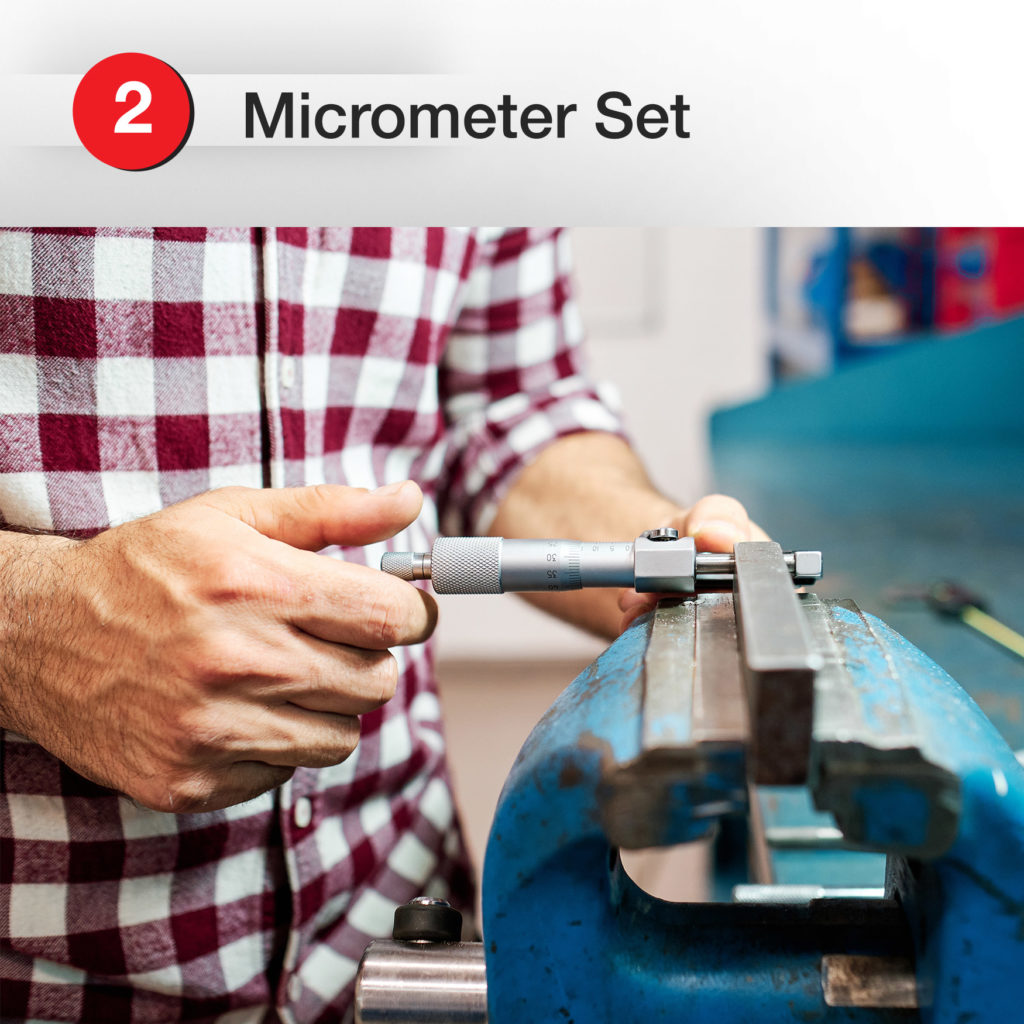
A micrometer is another type of precision measuring tool. You need this one to measure small dimensions to tight tolerances—typically to within a thousandth of an inch. So it’s not a tool to go cheap on.
A micrometer has a calibrated screw that rotates to bring a measuring anvil into contact with the workpiece. The measurement is indicated on a dial or digital readout. Micrometers are available in a variety of types:
- Outside micrometers for external dimensions
- Inside micrometers for internal dimensions
- Depth micrometers
Get a set of each kind to cover various sizes you might need to measure. This outside micrometer set from Mitutoyo is a good example.
Dial Indicator with Magnetic Base
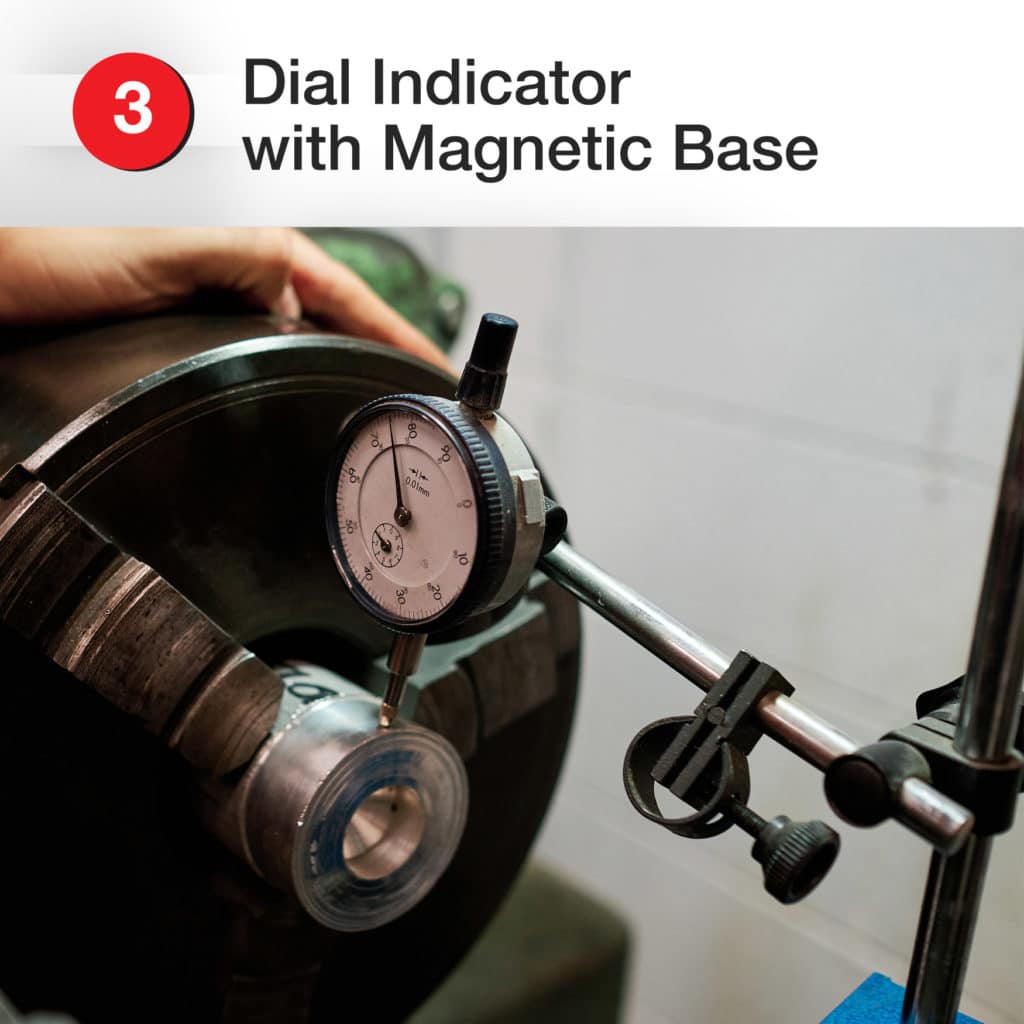
A dial indicator is yet another type of measuring tool. In this case, you use it to measure small changes in position or height with a high level of accuracy.
This comes in handy when you’re checking things like:
- Surface flatness
- Parallel surfaces
- Alignment of cutting tools and holding fixtures
The magnetic base is a time-saving way to attach your dial indicator to a metal surface. You don’t have to hold or clamp it, and it stays stable for accurate measurements. No need for anything fancy for a magnetic base, but you should look for a quality dial indicator like this.
Machinist’s Scribe
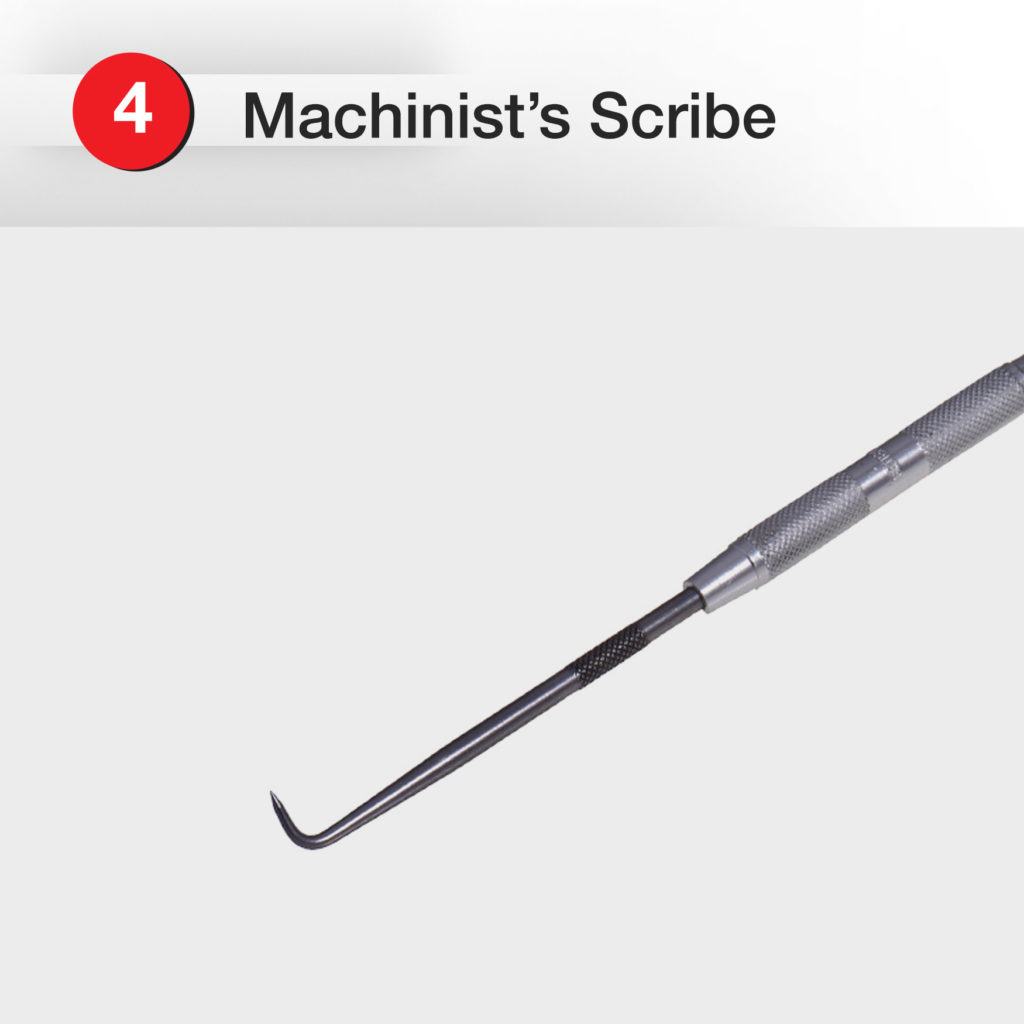
A machinist’s scribe is a long, slender, pointed hand tool. Use it alongside your measuring tools to mark the position of cuts, drills, or other features on a metal workpiece. You might also use a scribe to mark faults, defects, or other anomalies in a workpiece for troubleshooting. It provides a clear, precise line to ensure accuracy and consistency.
A machinist’s scribe makes a fine metal lathe project for beginners. Or, if you’d rather not tackle that project right now, here’s a nice, low-cost set of scribes.
Prick Punch
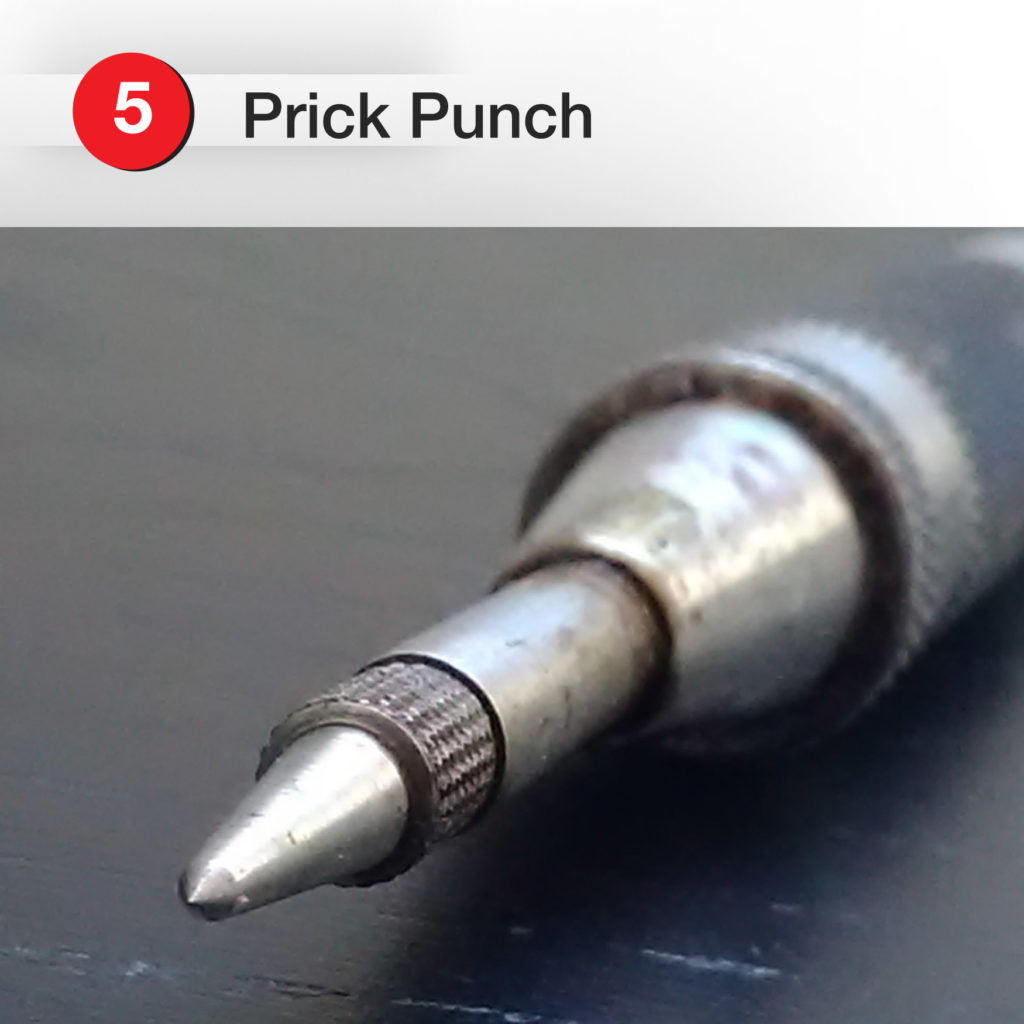
Machinists use a prick punch (also called a center punch) to make a small dimple or indentation in a workpiece. The dimple created is useful as:
- A starting point for drilling or punching, preventing the drill or punch from slipping.
- A reference point for aligning, positioning, or measuring features.
- Layout that serves as a guide for other operations.
A prick punch is a simple, effective, yet low-cost tool.
Choose a manual rather than an automatic version, like you would use for woodworking, since the automatic ones may lack the power to make a dimple in your metal. Opt for higher quality since you’ll be using it frequently, and prick punches aren’t expensive.
This Starrett Steel punch is a good option.
Feeler Gauge Set
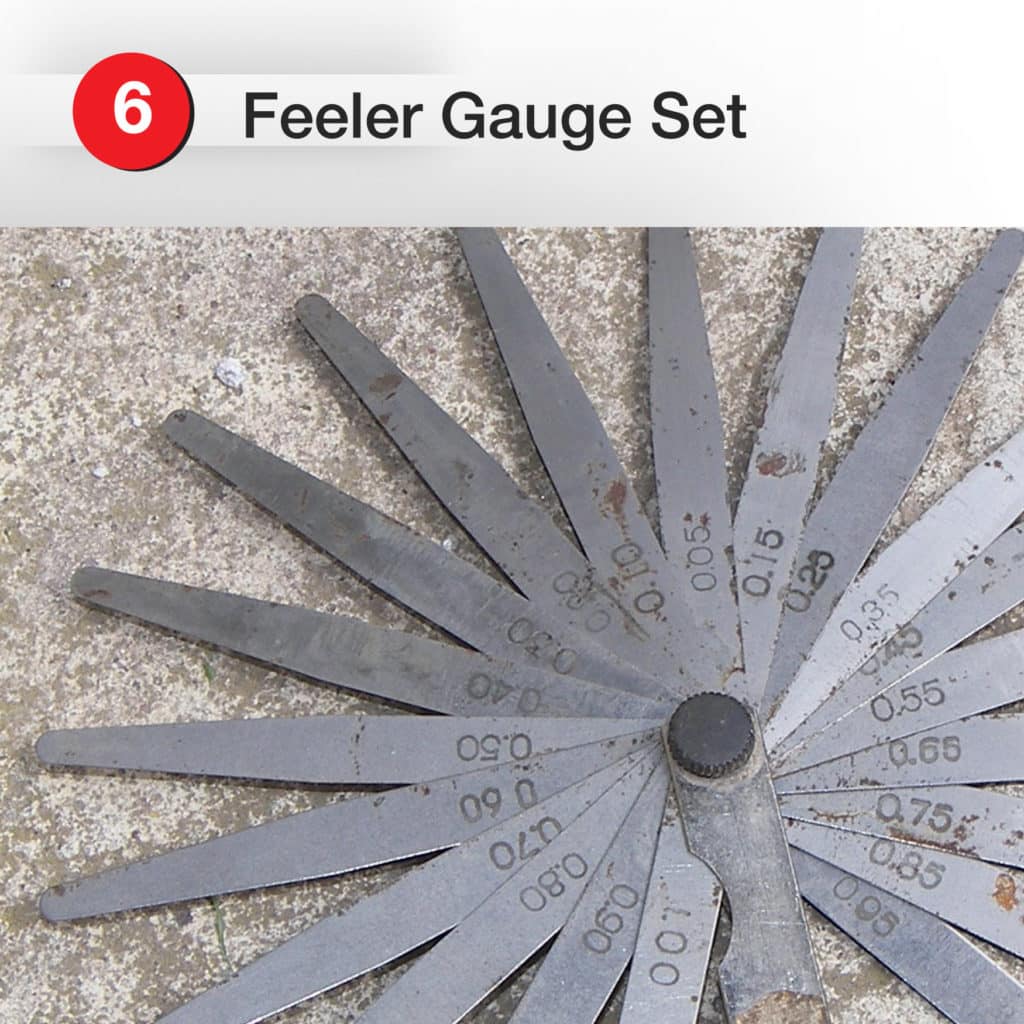
A feeler gauge set helps measure small gaps and clearances with high accuracy. It’s a collection of thin metal blades of varying widths. By inserting different blades into the gap and checking which one fits, you can measure the clearance between two parts—such as between a valve and its seat or a spark plug and its electrode.
This is another tool you’ll use and beat up a lot in your shop. Low-cost versions are fine, but you might want to verify the thickness of the blades with your micrometer.
This feeler gauge set from Gearwrench should do the trick.
Sharpening Stone
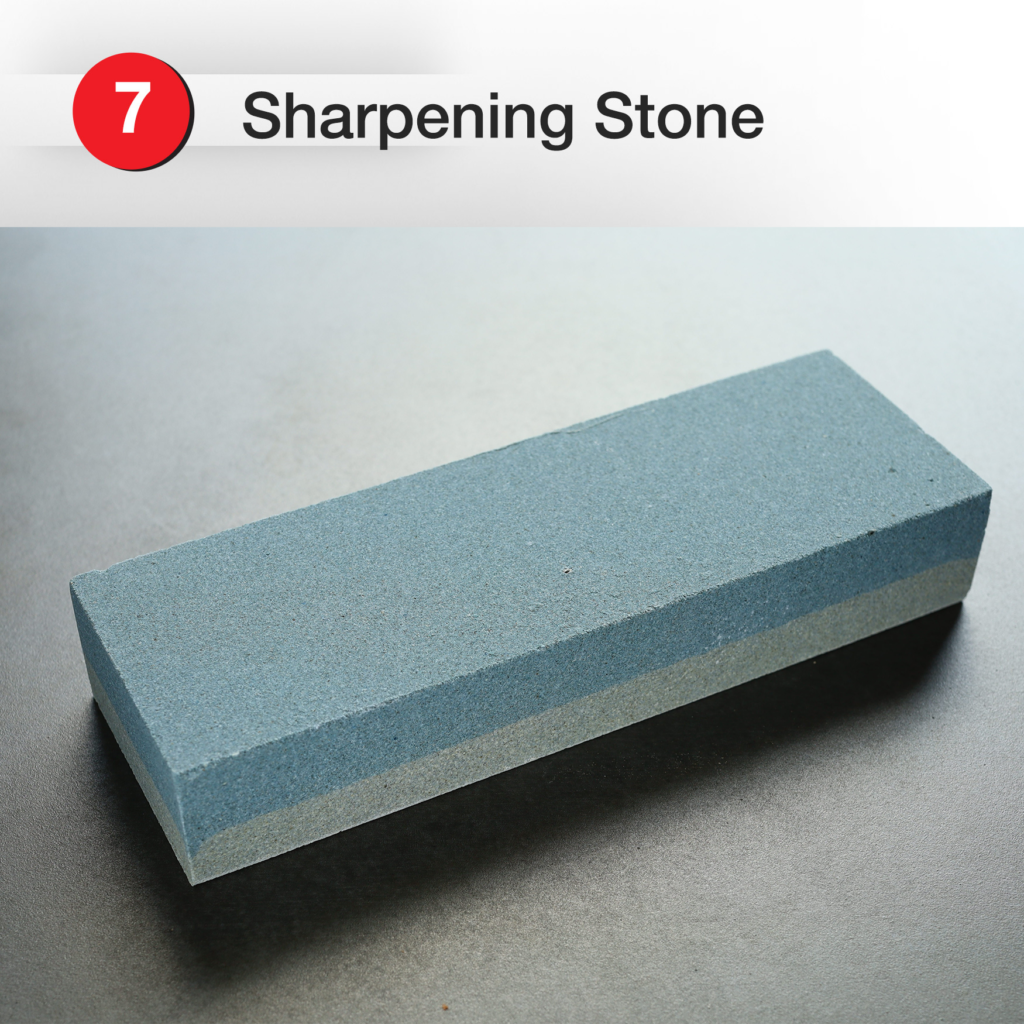
Burrs—small metal protrusions—on cut workpieces are just a part of machining. But burrs cause safety and quality problems.
A decent sharpening stone is the best deburring tool money can buy. Helping you get rid of burrs and keep the piece you just cut from cutting you back. Simply rub the stone against the edge you just cut to remove any burrs before handling any workpiece barehanded.
Sharpening stones come in different grits or levels of abrasiveness. Coarse grits are for heavy material removal. Finer grits refine and polish the edge. What you’ll want is one that has both medium and fine grit sides.
You’ll use the fine grit to remove burrs, but having the other side gives you the ability to knock off bigger burrs and deburr edges without damaging the fine side. We also recommend that beginner machinists get a standard-sized one because it gives you a good size to hold on to. Look for a sharpening stone like this one with both medium and fine grits.
Thread Pitch Gauge
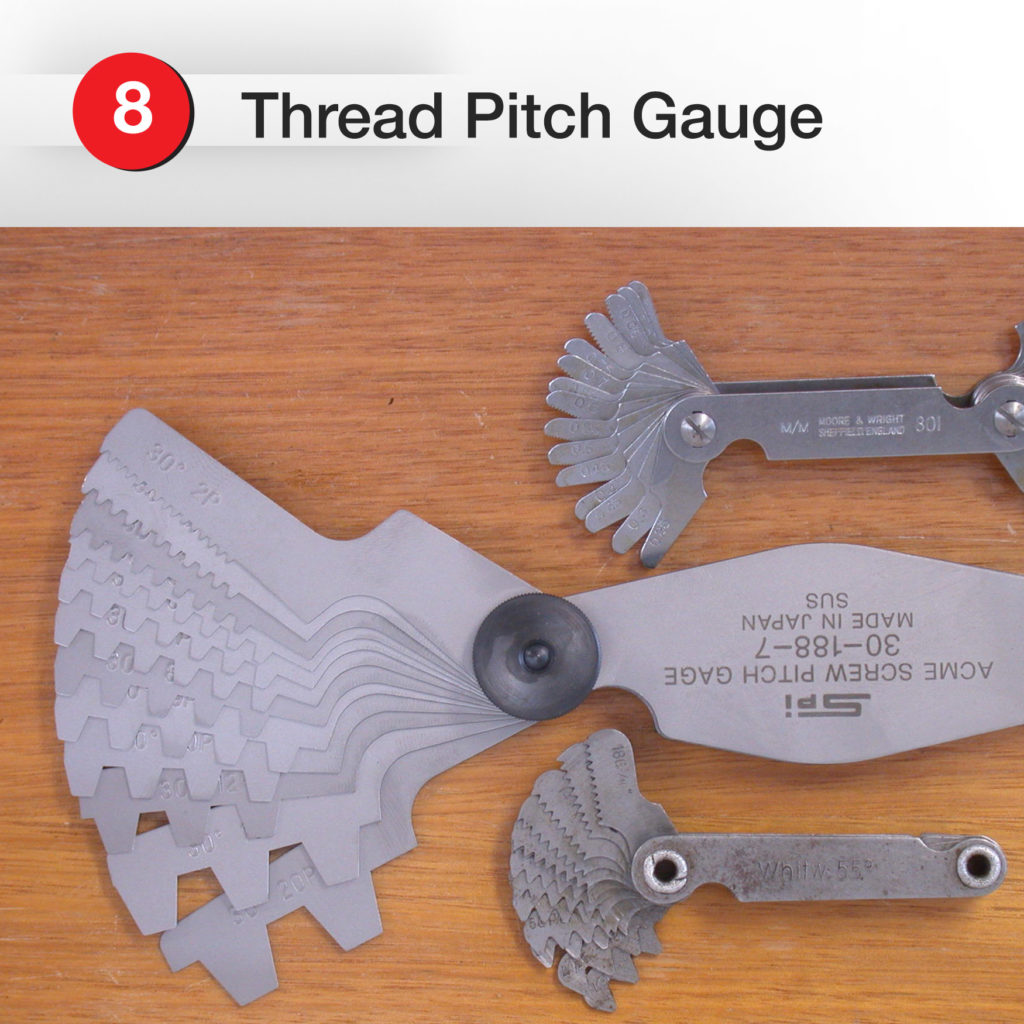
As the name implies, a thread pitch gauge helps you measure the pitch (or spacing) of screw threads. This info is key to creating replacement screws and checking the accuracy of a threaded part.
A thread pitch gauge has a series of metal blades, each with a different number of teeth per inch. Insert the blades into the thread and check which one fits. This thread pitch gauge from Mitutoyo would be a good choice.
Edge Finder
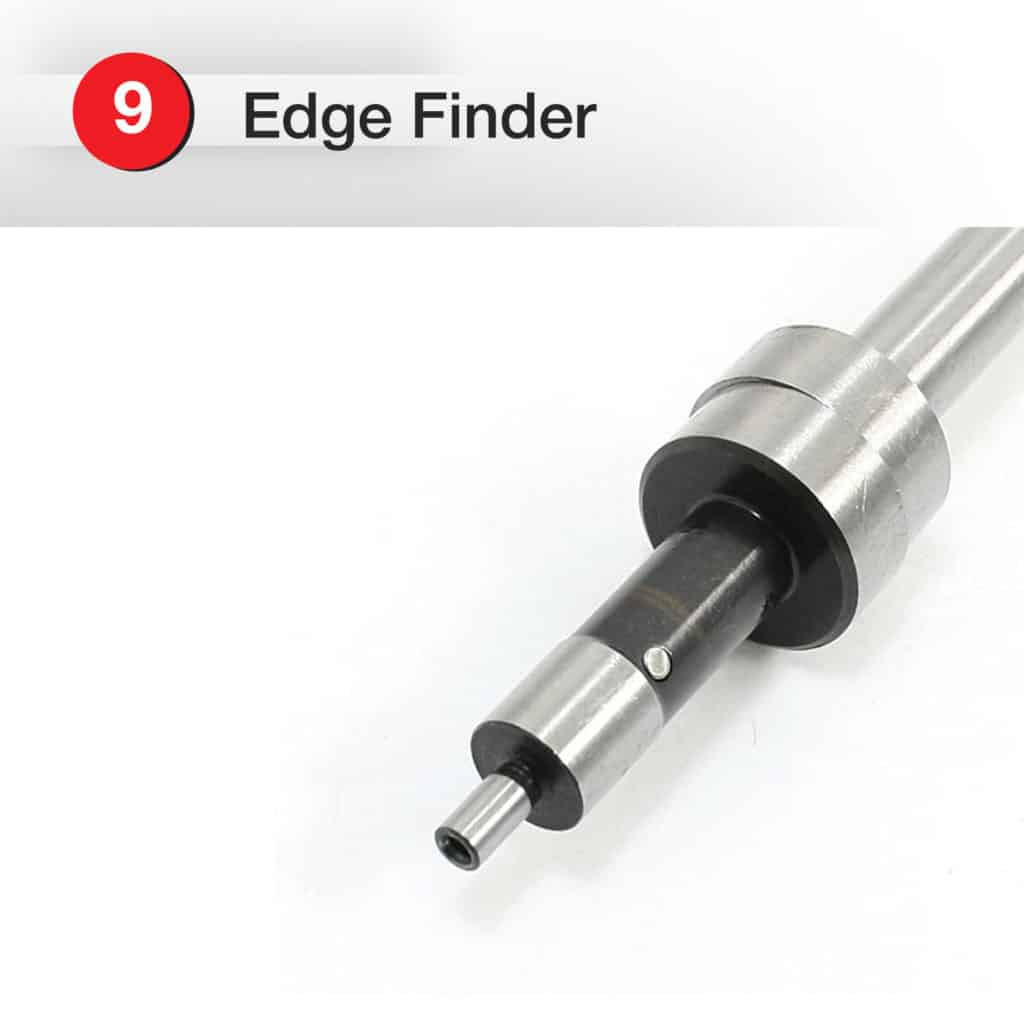
An edge finder comes in handy when you need to cut in exactly the right spot. This small, simple device locates the edge of a workpiece relative to a machine’s spindle.
It has a cylindrical probe with a pointed tip mounted in the spindle. When the tool contacts the edge, it causes a slight change in the spindle rotation. When you know where the edge is, you can position your cuts precisely.
Here’s a fine edge finder option for this important but low-cost tool.
Sharpies or Other Industrial Markers
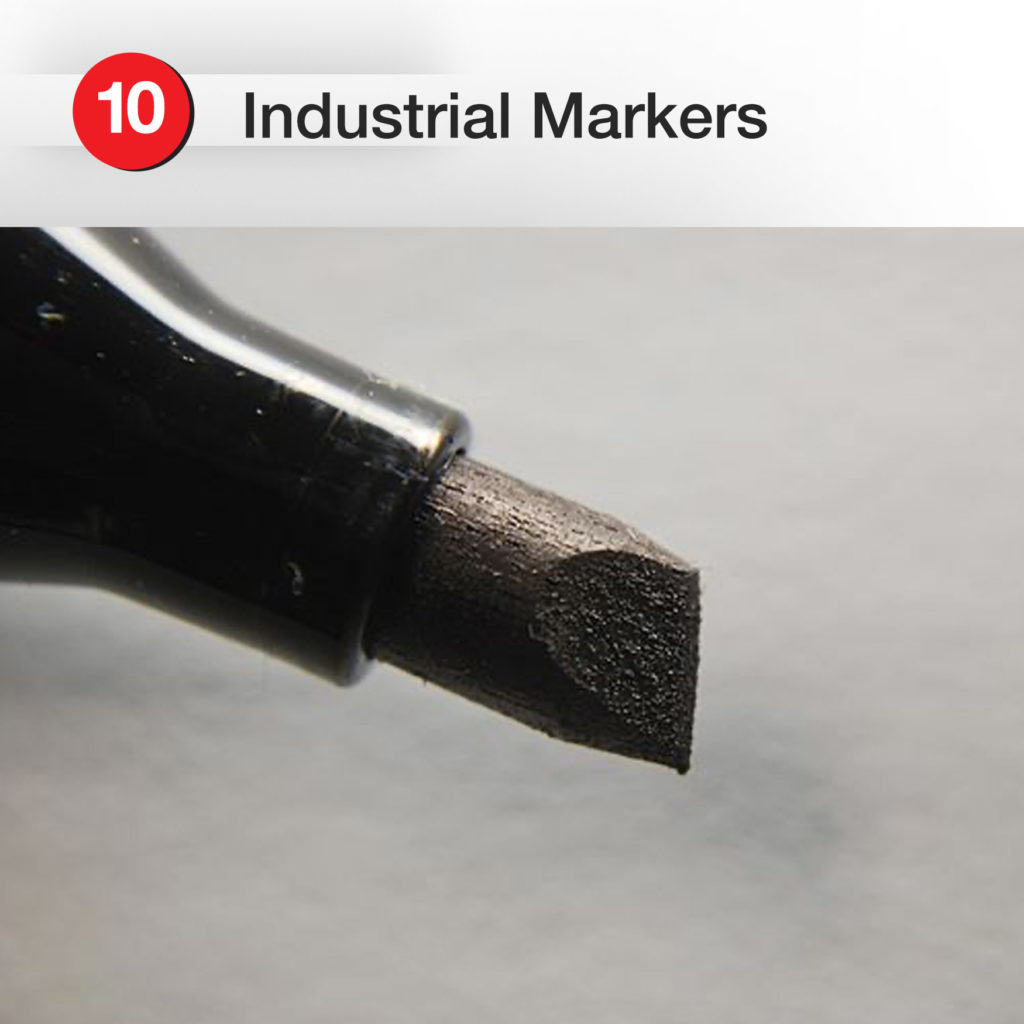
For markings other than the ones you etch with your machinist’s scribe, an industrial marker is nice to have. Permanent markers are good for labeling parts or other important references around your shop.
Just be sure your markers are industrial grade so they don’t wear off the second coolant touches your markings. Here’s a good marker set from Sharpie.
Ink Pen

In addition to your Sharpies, you’ll probably want some pens on hand for notes and quick calculations. Like the markers, your pens should be industrial strength. You need something that won’t smudge or run when exposed to coolant, oil, etc.
Many machinists prefer a Fisher space pen since you’ll often be writing onto coolant-soaked nitrile gloves. It’s pricier than your average set of Bics but will work far better and last much longer for the purpose. Just don’t loan it out to anyone.
Tape Measure
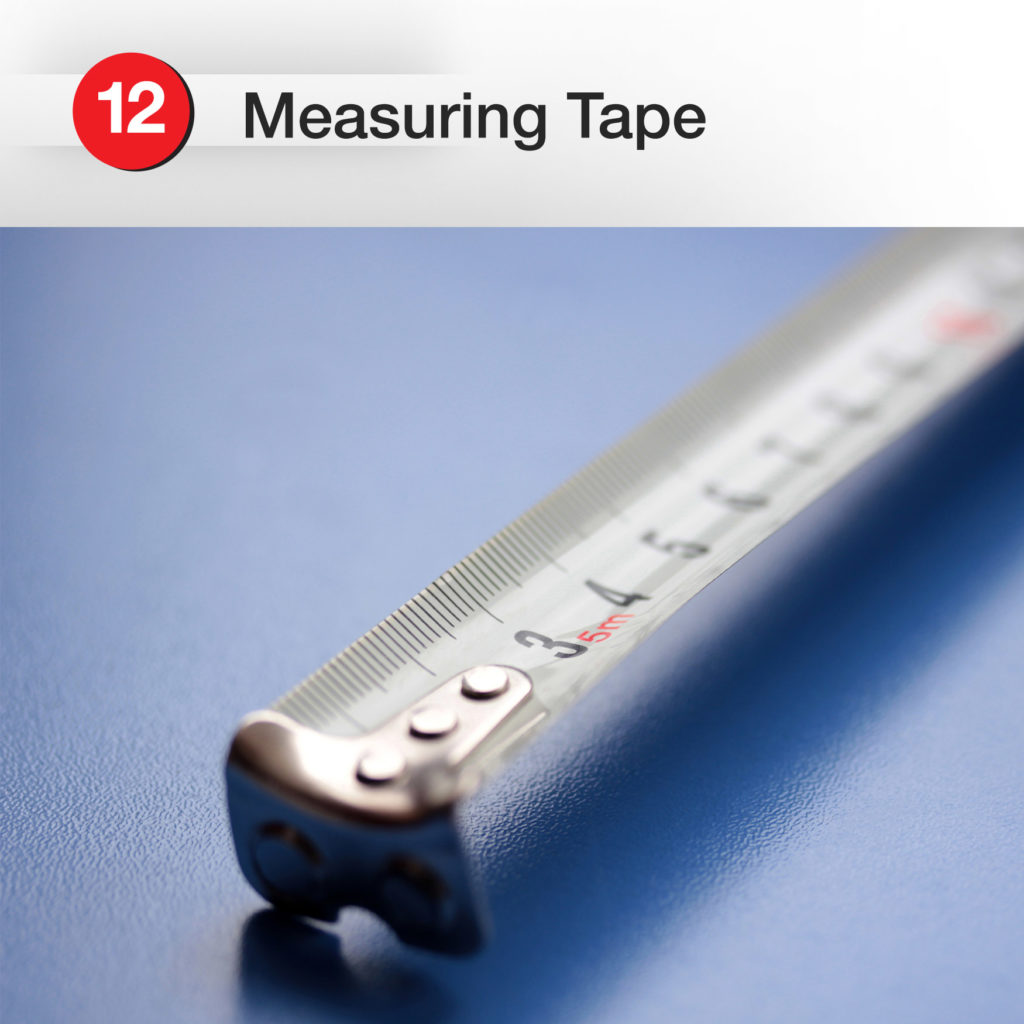
This list already includes plenty of measuring tools for small, precision work. But you also need a tape measure to check larger workpiece dimensions and other less high-accuracy tasks.
A good tape measure for a machinist should be:
- Accurate within 1/16 of an inch or better.
- Durable—built to withstand wear and tear, including exposure to heat, oil, and metal shavings.
- Easy to read with clear, legible numbers and fractions.
Here’s a Starrett tape measure that fits the bill but just about any quality tape will work.
Combination Wrench Set
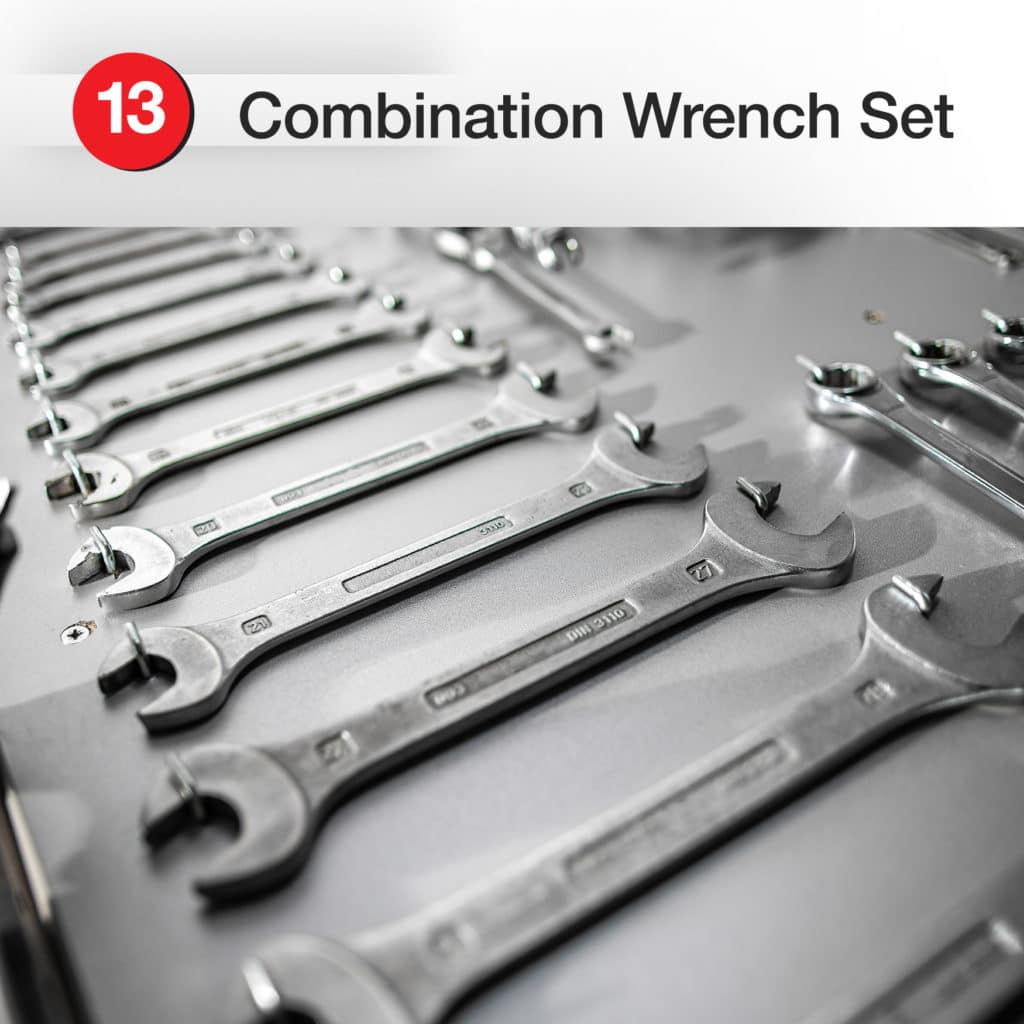
Any shop needs a quality combination wrench set. Your machine shop is no exception.
Look for a complete set in a range of sizes, both metric and imperial. Ratcheting capability is ideal for quick adjustments. This wrench set from GEARWRENCH should work well.
Hex Key Set
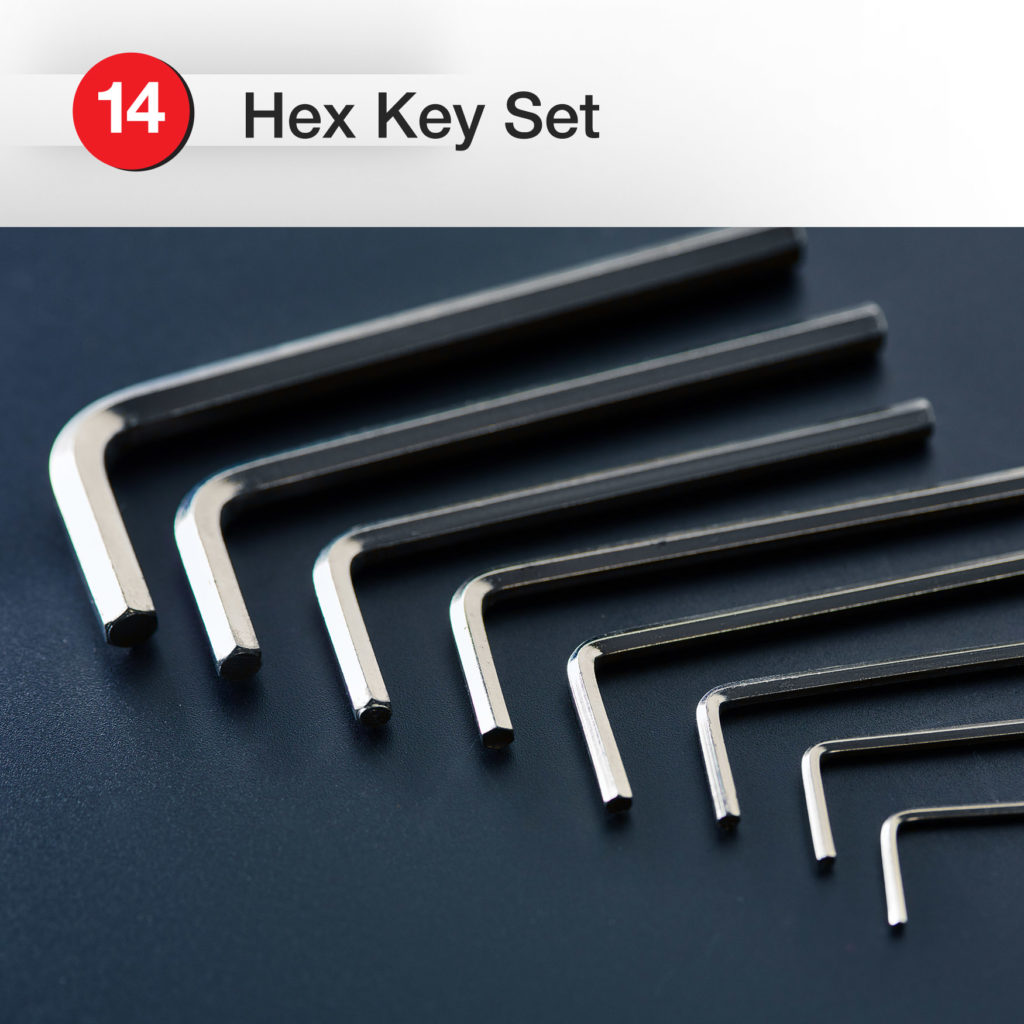
You’ll need hex keys, also known as Allen wrenches, for bolts or screws with a hexagonal socket—often found securing clamps, jigs, or other accessories to a machine’s worktable.
Hex screws come in a range of sizes, so it’s important to have a broad set of hex keys. Look for hex keys in both metric and imperial sizes. They should be made of durable materials, such as hardened steel, to withstand the demands of machining.
It’s also worth considering hex keys with a ball end for additional access to hard-to-reach bolts or screws. Some machinists prefer hex keys with a T or L shape for better leverage.
If there is a set of basic tools that a machinist uses more often than any other, it’s these. We highly recommend buying a quality set and keeping an extra as a backup because no matter how much you spend on these, they do strip.
Here’s a quality American-made hex key set.
Plier Set
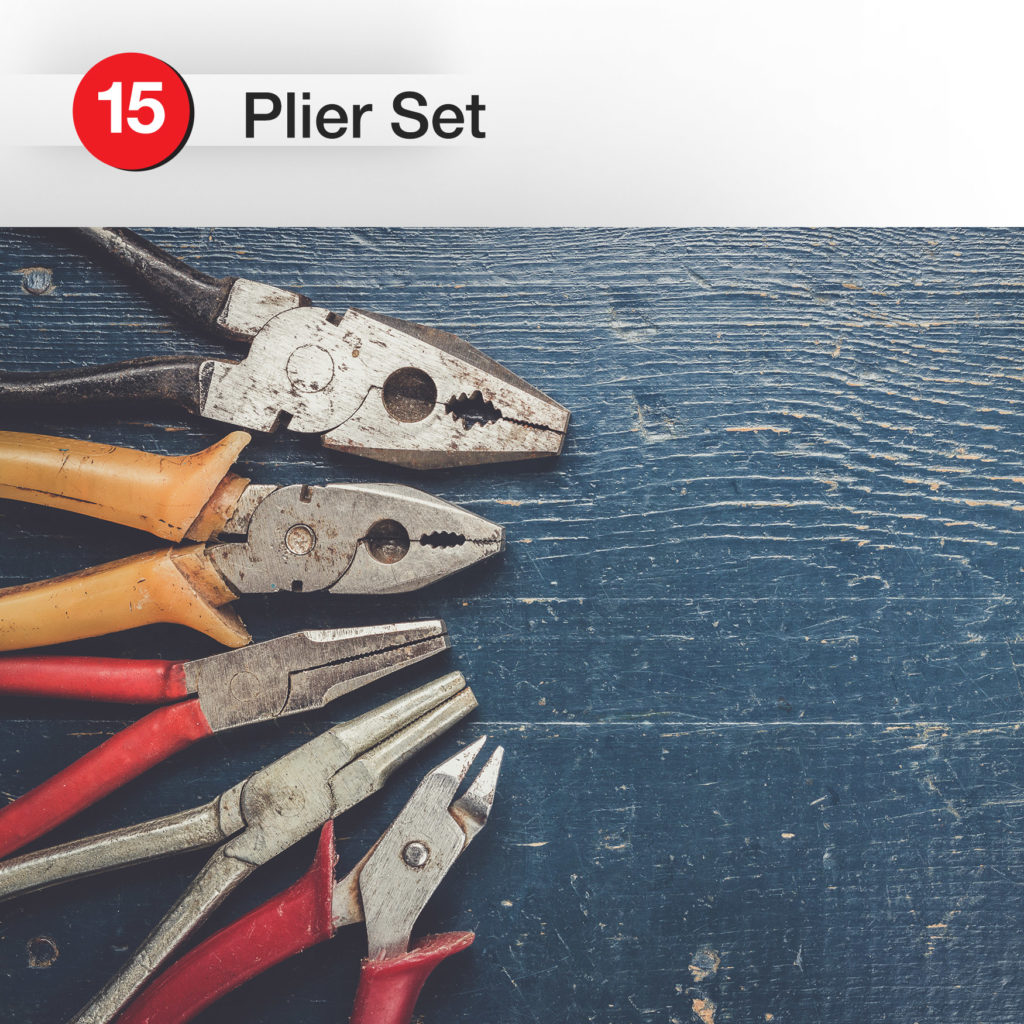
A quality set of pliers is another must-have in any shop. You’ll want a variety of pliers so you can always grab the right tool for the job. Some examples:
- Diagonal cutting pliers/wire cutters for cutting zip ties off of raw stock
- Long nose pliers for bending and shaping wires or other small components
- Slip joint pliers with an adjustable for gripping components of different sizes
- Locking pliers/vise grips for clamping down securely on components you’re doing other tasks
- Round nose pliers for making precise adjustments or creating specific shapes
This Duratech pliers set includes a good variety of high-quality machine shop tools.
File Set
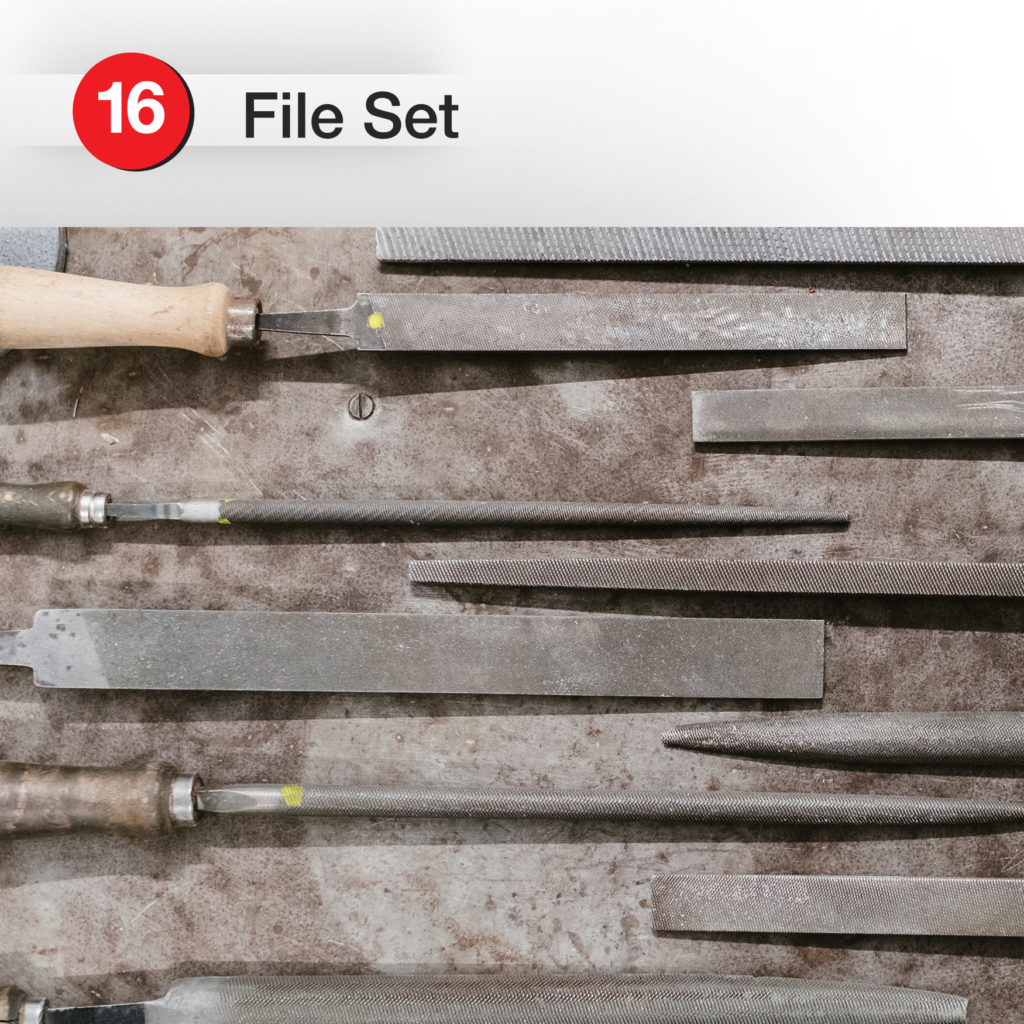
When you need to remove more material than you can with a sharpening stone, you need some metal files.
To cover the widest range of tasks, choose a set with a variety of shapes, sizes, and cuts of files. Be sure it includes round files for shaping holes and needle files for precise work in tight spaces.
Check out this solid 25-piece file set with a carrying case.
Dead Blow Hammer
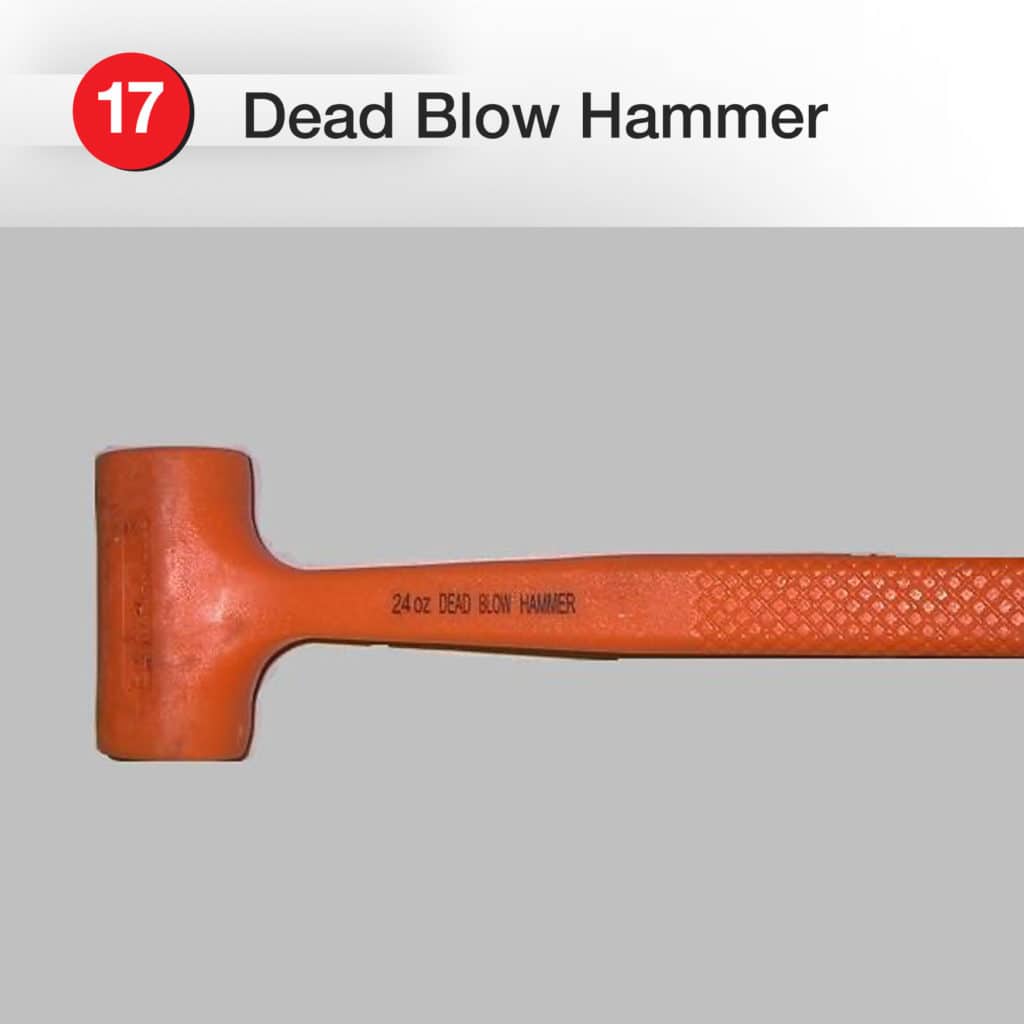
We saved the coolest-named tool for last. It’s called a “dead blow” hammer because there’s little to no rebound on the strike. So you have greater control over the striking force.
Dead blow hammers are made of a heavy, dense material, such as steel. They’re also filled with lead shot or another weighting material. Lastly, they’re covered in thick rubber. They’re lighter than your typical sledge, but they’re still able to give a powerful, shock-absorbing blow without damaging the workpiece. Use them to:
- Tap workpieces into place
- Remove stuck parts
- Tap fixturing into place
- Set bearings or gears
This neon orange dead blow hammer would be easy to spot in your shop, and since they’re cheap, you should buy a few. These things do wear out, and rather quickly at that.
Preparation Is the Key
When you get together all the essential tools for the beginning machinist, you’re prepared to advance your machining skills. Get started with our introductory overview of machining. Pick up some machinist tips and tricks, too.
As you grow in the field, keep in mind that most of your machining equipment needs 3-phase electricity. So you need a way to power these powerful machines. And American Rotary has the answer! Our American-made rotary phase converters for machining can provide balanced power for everything in your shop.
Questions? We’re here to help. Contact us anytime!



